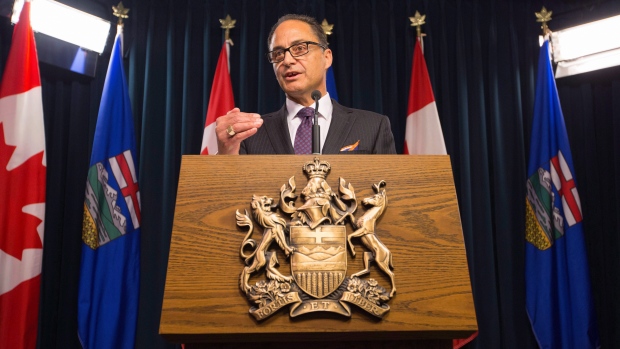Aug 23, 2016
What to look out for in Alberta’s fiscal update today
By Tara Weber

This will be an update on the fiscal first quarter (runs April – June)
In this quarter, rig counts, retail sales, manufacturing shipments, wholesale trade, building permits, and average weekly earnings all fell from year-ago levels.
Unemployment hit 7.9 per cent at end of June (and subsequently jumped to 8.6 per cent in July).
Things to watch for:
May wildfires in Fort McMurray will have a major impact. In April’s budget, the province had set aside $246 million this fiscal year for disaster and emergency assistance -- $46 million of that was already allocated for payments from 2013 flood assistance.
The province said in June the initial costs to fight the fire were up to $615 million, but that figure didn’t include the loss of revenue from the break in oil sands production, loss of royalty revenue, and the cost of the cleanup. It also didn’t account for the cost of property loss, which is expected to be in the billions.
Consolidation of Boards – The province began a review of Alberta agencies, boards and commissions; and started amalgamating or disbanding some agencies.
In April, for example, it consolidated four agencies - Alberta Innovates Bio Solutions, Alberta Innovates Energy & Environment Solutions, Alberta Innovates Technology Future, and Alberta Innovates Health Solutions into one corporation. The annual budgets of those agencies were cut by $44 million and the elimination of overhead was expected to save another $2 million.
Crop Insurance Claims will have an impact on the Contingency Account. After the May long weekend, Alberta was hit with storms, mostly affecting the Lethbridge and Medicine Hat area. The number of claims this year is slightly ahead of 2012, when the province paid out about $450 million. The nasty weather continued through July and August, so all claims won’t be in this quarter.
Budget background:
2016-2017 budget was released on April 14, 2016.
At the time, the Alberta Government anticipated a $10.4 billion deficit by end of the fiscal year, with total debt jumping to $57.6 billion by the end of the 2018-19 fiscal year.
That $10.4 billion deficit forecast was a worst case scenario based on WTI staying at ~US$36. If oil prices increased to ~US$42, the deficit was projected at $9.7 billion.
For the first time in more than two decades, the Alberta government needed to borrow to cover its operating expenses (~$5.4 billion in total). That’s in addition to $5 billion in borrowing for capital expenses.
Finance Minister Joe Ceci expected to collect only $1.4 billion in royalties this year – the lowest level on record (when adjusted for inflation).
At budget time, the government expected its liabilities (including pensions) to total $71 billion by the end of the fiscal year (up from $60 billion last year). Against financial assets of $61 billion, this would have put Alberta in a net-debt position of $10 billion by the end of this fiscal year.
The debt wasn’t expected to begin shrinking until 2024, unless oil prices rebound.


